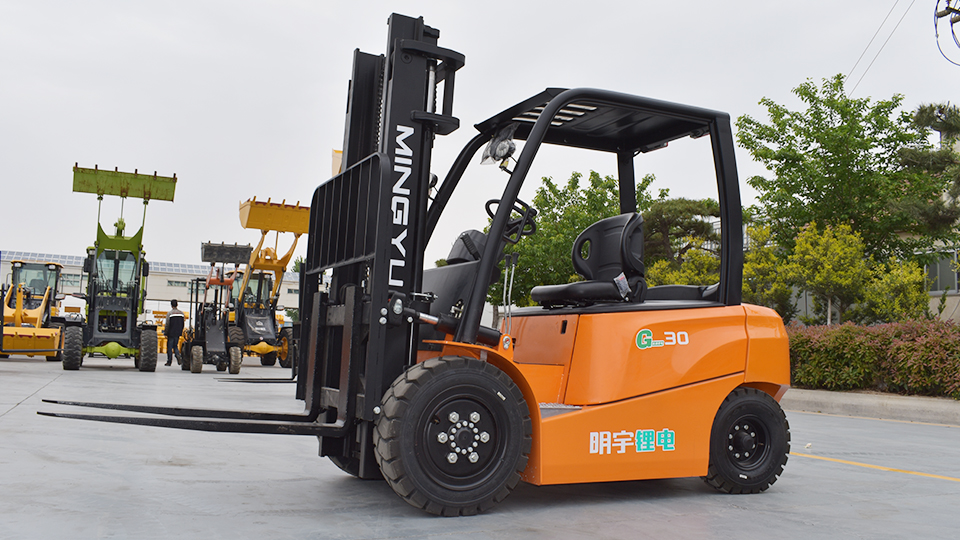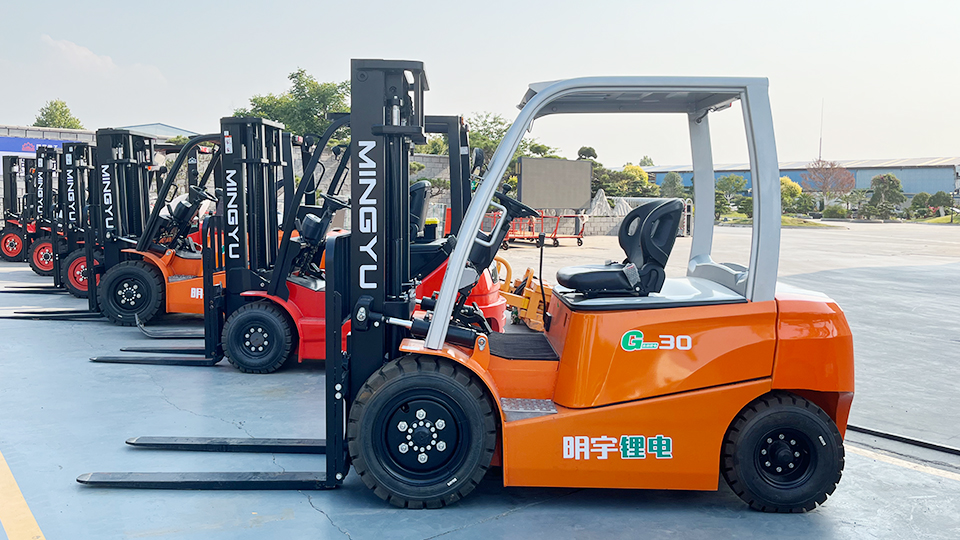
The Governed Gallop: Examining Speed Limits on Electric Forklifts
Electric forklifts, the silent workhorses of warehouses, distribution centers, and manufacturing facilities, play a crucial role in modern material handling. Their maneuverability, zero emissions, and increasing power capabilities have made them a preferred choice over their internal combustion engine counterparts in many indoor and some outdoor applications. However, amidst their efficiency and technological advancements, a fundamental question arises regarding their operational parameters: is there a speed limit on electric forklifts?
The answer, while seemingly straightforward, is nuanced and deeply intertwined with safety regulations, operational environments, equipment design, and manufacturer specifications. This technical article will delve into the multifaceted aspects of speed limits on electric forklifts, exploring the regulatory landscape, the engineering considerations that influence speed capabilities, the rationale behind imposed limitations, and the technologies employed to govern their velocity.
The Regulatory Landscape: A Foundation for Safe Operation
The primary driver behind speed limitations on forklifts, including electric models, is safety. Regulatory bodies worldwide have established standards and guidelines to minimize the risk of accidents, collisions, and injuries in workplaces where these powerful machines operate.
In the United States, the Occupational Safety and Health Administration (OSHA) is the principal federal agency responsible for enforcing workplace safety regulations. While OSHA does not explicitly mandate a specific numerical speed limit for forklifts in all situations, it emphasizes the requirement for safe operating speeds. OSHA regulation 1910.178(n)(8) states that "The driver shall be required to operate the vehicle at a safe speed consistent with the conditions of the operation." This performance-based standard leaves the determination of what constitutes a "safe speed" to the employer, taking into account factors such as:
Workplace layout: Congested areas, narrow aisles, and blind corners necessitate lower speeds.
Pedestrian traffic: Areas with frequent pedestrian movement require significantly reduced speeds and heightened operator awareness.
Floor conditions: Uneven surfaces, ramps, and slippery floors demand slower speeds to maintain stability and control.
Load characteristics: The weight, size, and stability of the load being carried influence safe operating speeds.
Visibility: Poor lighting or obstructed views necessitate slower speeds to allow for adequate reaction time.
Operator skill and training: While not directly a speed limit, proper training emphasizes operating within safe speed parameters.
State-level OSHA programs may have additional or more specific regulations regarding forklift operation, so employers must comply with both federal and state requirements.

In Europe, the European Agency for Safety and Health at Work (EU-OSHA) provides guidelines, and specific directives related to machinery safety and workplace safety are implemented by member states. Standards such as EN ISO 3691-1:2015+A1:2020, concerning industrial trucks – safety requirements and verification – Part 1: Self-propelled industrial trucks, address design and safety features, which indirectly influence speed capabilities and limitations. National regulations within European countries may also specify speed limits for certain environments or applications.
Similarly, other international standards organizations and national regulatory bodies around the world have their own sets of guidelines emphasizing safe operating speeds based on specific workplace conditions. The common thread across these regulations is the prioritization of safety through context-dependent speed management rather than a universally fixed limit.
Engineering Considerations: The Built-In Potential and Constraints
Electric forklift manufacturers design their equipment with inherent speed capabilities based on factors such as motor power, battery voltage, gear ratios, and tire size. However, these inherent capabilities are often intentionally limited through electronic controls and design features to ensure safe operation and prolong component life.
Motor and Drive System: The electric motor provides the power for both traction and lifting. Higher voltage and more powerful motors can theoretically achieve higher speeds. However, manufacturers strategically select motor specifications to balance performance with safety and energy efficiency.
Gear Ratios and Transmission: Electric forklifts typically utilize direct drive or single-speed transmissions. The gear ratio is a critical factor in determining the relationship between motor speed and the rotational speed of the wheels, thus influencing the maximum achievable speed.
Tire Type and Size: The type and size of tires affect traction, stability, and the overall speed potential. Larger diameter tires, for instance, can result in higher speeds for the same motor RPM. However, tire selection is primarily driven by load capacity, floor conditions, and stability requirements.
Electronic Control Systems: Modern electric forklifts are equipped with sophisticated electronic control units (ECUs) that manage various aspects of the vehicle's operation, including speed. These controllers can be programmed to limit the maximum travel speed, acceleration rates, and even speed based on specific operational modes or attachments.
Stability Control Systems: Some advanced electric forklifts incorporate stability control systems that can automatically reduce speed or adjust other parameters if the system detects an unsafe operating condition, such as excessive lean during cornering.
Manufacturers often conduct extensive testing to determine the safe and optimal operating speeds for their equipment under various load conditions and on different surfaces. The recommended operating speeds are typically documented in the operator's manual and may vary depending on the specific model and its intended application.

The Rationale Behind Imposing Speed Limitations
The decision to limit the speed of electric forklifts, whether through regulatory pressure or manufacturer design, stems from a clear understanding of the potential hazards associated with excessive speed in material handling environments:
Increased Stopping Distance: Higher speeds require longer distances to bring the forklift to a complete stop, increasing the risk of collisions with obstacles or pedestrians.
Reduced Maneuverability: Operating at high speeds can make it more difficult for the operator to navigate tight spaces, make precise turns, and maintain control of the vehicle, especially when carrying a load.
Elevated Risk of Tip-Overs: Forklifts, by their nature, have a high center of gravity, particularly when loaded. Operating at excessive speeds, especially during turns or on uneven surfaces, significantly increases the risk of lateral or longitudinal tip-overs, which can cause severe injuries or fatalities.
Greater Impact Force in Collisions: The kinetic energy involved in a collision increases exponentially with speed. Higher speeds result in more severe impacts, increasing the likelihood of damage to goods, equipment, and infrastructure, as well as causing more serious injuries.
Reduced Reaction Time for Operators and Pedestrians: Faster-moving forklifts leave less time for both the operator and pedestrians to react to unexpected situations, increasing the probability of accidents.
Increased Wear and Tear: Operating at high speeds can put excessive stress on the forklift's components, leading to premature wear and tear, increased maintenance costs, and a shorter lifespan for the equipment.
Technologies for Speed Governance: Implementing the Limits
Electric forklift manufacturers employ various technologies to implement and enforce speed limitations:
Programmable Speed Governors: The ECU of the forklift can be programmed with specific maximum speed limits for travel and lifting/lowering operations. These limits can often be customized by authorized personnel based on the specific workplace requirements and risk assessments.
Operational Modes: Many electric forklifts offer different operational modes (e.g., "turtle" mode for slow, precise maneuvering, "rabbit" mode for faster travel in open areas). Each mode has pre-set speed limits and acceleration profiles.
Load Sensing Systems: Some advanced systems can detect the weight of the load being carried and automatically adjust the maximum allowable speed. Heavier loads often necessitate lower speeds for stability.
Proximity Sensors and Zone Control: Geofencing and proximity sensor technologies can be integrated to automatically reduce the forklift's speed when it enters designated zones with high pedestrian traffic or confined spaces.
Impact Detection Systems: While not directly preventing high speeds, these systems can record and alert supervisors to instances of high-impact collisions, which may be indicative of unsafe operating speeds.
Operator Training and Access Control: While not a technological speed limit, proper operator training emphasizes adherence to safe operating speeds, and access control systems can ensure that only trained and authorized personnel operate the equipment.
The Importance of Context and Site-Specific Speed Management
It is crucial to understand that a single, universally applicable speed limit for electric forklifts does not exist. The determination of safe operating speeds is highly context-dependent and should be based on a thorough risk assessment of the specific workplace environment and operational procedures.
Employers have a responsibility to:
Conduct a comprehensive risk assessment: Identify potential hazards and determine appropriate safe operating speeds for different areas and tasks within their facility.
Establish clear site-specific speed limits: These limits should be communicated to all operators through signage, training, and operational procedures.
Utilize the forklift's speed control features: Program or select appropriate operational modes to enforce the established speed limits.
Implement traffic management plans: Designate pedestrian walkways, mark travel lanes, and use physical barriers to separate forklifts from foot traffic.
Provide thorough operator training: Ensure that all operators are competent in operating the forklift safely and understand the importance of adhering to speed limits.
Regularly review and adjust speed limits: Workplace conditions can change, so speed limits should be periodically reviewed and adjusted as necessary.
Conclusion: A Governed Approach to Safe and Efficient Operation
While there isn't a singular, universally mandated speed limit for electric forklifts, the concept of speed limitation is deeply ingrained in safety regulations, manufacturer design, and operational best practices. The emphasis is on operating at a safe speed consistent with the conditions. This requires a collaborative approach involving regulatory bodies, manufacturers, and employers to establish and enforce context-specific speed limits that prioritize the safety of operators, pedestrians, and the overall work environment. The "governed gallop" of electric forklifts, therefore, is not about arbitrarily restricting their potential but about intelligently managing their power and speed to ensure efficient and, above all, safe material handling operations. By understanding the technical underpinnings of speed control and the critical role of site-specific risk assessment, businesses can harness the benefits of electric forklifts while maintaining a safe and productive workplace.
Name: selena
Mobile:+86-13176910558
Tel:+86-0535-2090977
Whatsapp:8613181602336
Email:vip@mingyuforklift.com
Add:Xiaqiu Town, Laizhou, Yantai City, Shandong Province, China